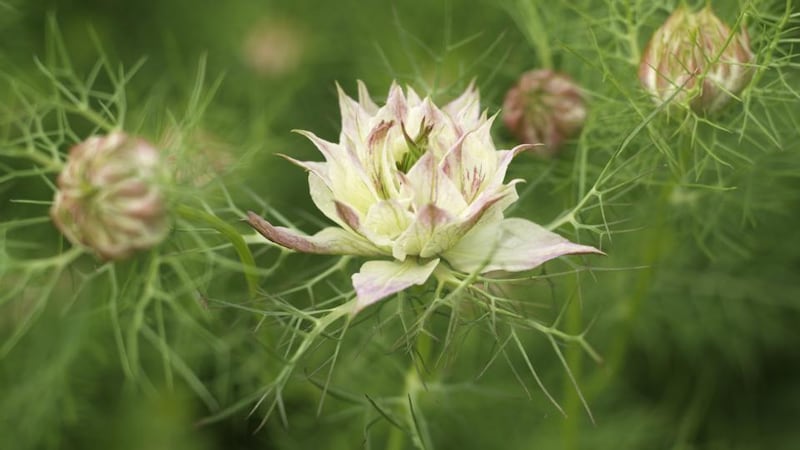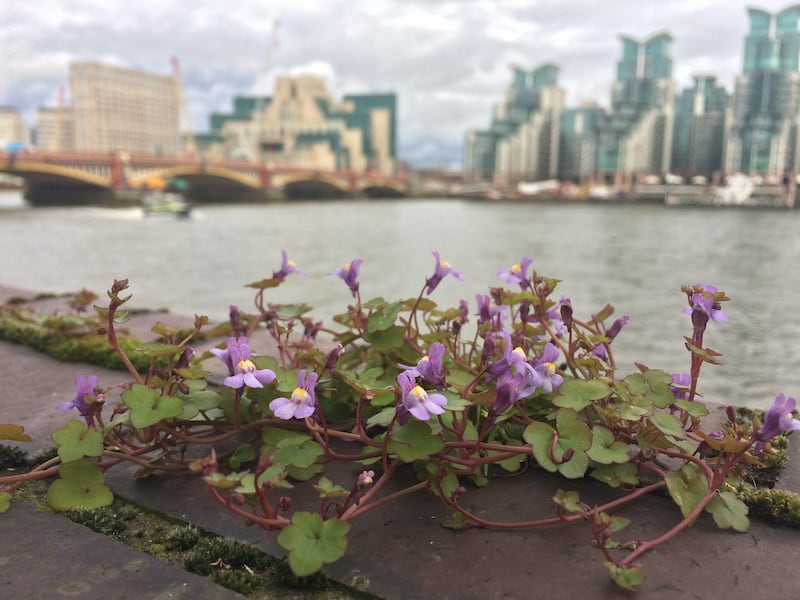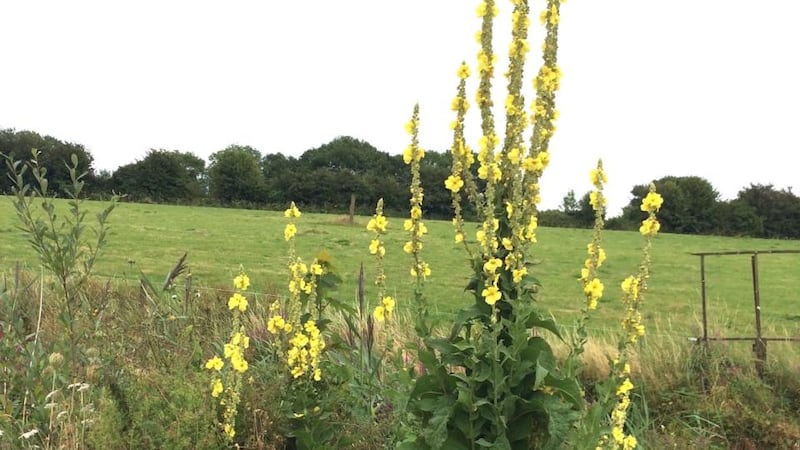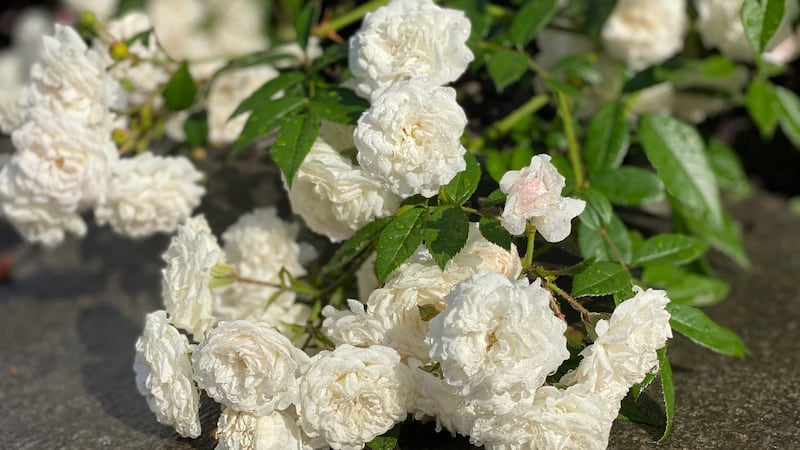For those of us who garden, June is in many ways the month of reckoning, nature’s totting-up of all those cold, dark days in the horticultural trenches when we dug and divided, planted and sowed, hoed, weeded, raked and pruned in the hopes of a better garden.
If it had to be expressed as a mathematical equation, then it’s a complex sum of pluses (those lofty dreams and flowery ambitions, the opportunity, skill and physical effort required to bring them to life, plus no small amount of good luck). This must then be tallied against the minuses of harsh weather, plant pests and diseases, and a multitude of other constraints regarding time, budget, space and physicality (we’re only human) as well as a certain inevitable amount of bad luck.
[ Short-lived showstoppers to bring glamour to your gardenOpens in new window ]
Sometimes I look at our new-old garden and wonder if it’s an unwinnable contest. I think about the weeds, the slugs, the seedlings begging to be potted on and the plants begging to be watered. And the imponderable: will aphids get the lupins? Will a late frost blast the emerging dahlias? Will mice scavenge the freshly sown peas, or cutworms get the lettuce seedlings? Will the neighbour’s visiting tom cat ever, ever stop peeing on the bearded irises (probably not)?
On the other hand, I’ve learned to count my blessings. Surrounded by so many plants that have started to magically flower and fruit in recent weeks, you can’t help but be constantly reminded of nature’s remarkable resilience and the special joy a garden gives. With this in mind, today’s column is all about nurturing what a friend once recommended to me as “an attitude of gratitude”, a hymn of thanks.

So in no particular order, here’s a heartfelt thank you to the love-in-the-mist (Nigella) whose tiny, shiny, hard black seeds I scattered on the ground one dismal autumn day last year, and whose slender-stemmed, sky-blue and white flowers are now threading themselves through a cloud of direct-sown ammi, ornamental carrot and Fanta-orange Californian poppies like a cloud of tropical butterflies. Who’d have thought these hardy annuals would make themselves so beautifully, waftily, gracefully at home? But they did.
Thank you also to the toadflax (Linaria purpurea) whose seed I collected in a friend’s garden a few years ago and then sprinkled on to the rough pebble paths and beds next to our little farmhouse last spring, much more in hope than expectation. Last autumn their baby seedlings emerged as tiny fluffs of green in the cold, damp soil, before quickly clumping up this spring. This month they started to flower with elegant abandon in pretty shades of lavender, pink and white, each tall, slender flower-spike a food-filled beacon for pollinating insects. Tall, slender and elegant, this hardy perennial has a winning ability to seed itself about without ever looking out of place.

Next on my list, a fond “thank you” to the lupins grown from seed saved from a friend’s garden, whose plump, silky spires of flowers appeared earlier this month and quickly reminded me how much I loved to grow these pretty early summer-flowering perennials as a child. I’d half-forgotten their sweet, peppery scent and the ease with which each faded bloom could be so easily slipped off the plant’s stiff flower stems like beads on an abacus.
Next up, a thanks to all the young clematis planted last year against our little farmhouse’s old limestone walls, my current favourite of which is the beautifully understated Clematis tibetana ‘Lorcan O’Brien’ with its tiny, chocolate-purple, bell-shaped flowers, which appear from May-October. Collected in the wilds of Tibet by the plantsman and head gardener of Kilmacurragh, Seamus O’Brien, and named in honour of his late brother, it’s a keeper. I’ve also planted the yellow-belled Clematis tangutica ‘Golden Tiara’, the purple-flowered Clematis texensis ‘Prince William’ and a host of different varieties of the late-flowering Clematis viticella. Although I backfilled their planting holes with some well-rotted manure, I still worried about whether these hardy ornamental climbers would manage to get their toes deep enough into the stony soil. But they already look very much at home.

Of course, every garden needs its unexpected guests, the magic fairy dust that enlivens planting schemes in unpredictable and exciting ways. So a big “go raibh maith agat” to the giant, silver-leafed mullein (Verbascum bombyciferum) that also appeared as baby seedlings last year, each architectural rosette of felted, grey-white foliage beautifully positioned by the master artist that is nature. Spurred on by the heatwave, in the past week their tall, woolly, lemon-yellow flower candles have started stretching skywards, right next to some newly planted Stipa gigantea and fat clumps of apricot-pink Verbascum ‘Southern Charm’ growing in a hot sunny border next to the house. Might they self-seed with too much abandon? I’ll just have to wait and see.
Plant purchases and home-propagated specimens aside, it’s fair to say a significant part of any garden is the sum of its seeds, cuttings and plants gifted over the years by green-fingered friends and family, all of them more reasons to be grateful. So to the lovely lady who last autumn generously gave me some of her oh-so-covetable Dowdeswell delphinium seedlings grown from seed bought on a visit to her daughter in New Zealand, thank you, I’ll treasure these glorious perennials. To my nonagenarian friend Eveleen, who sent me all those packets of seeds saved from the covers of magazines, it’s to you that I owe the garden’s young drifts of candy-pink Echinacea purpurea and its clumps of coral-coloured Potentilla ‘Melton Fire’ that are just about to burst into bloom. To the very kind person who last year sent me some boxes of dahlia tubers as a gift, thank you: not only did they make it through the gruelling winter but it might tickle you to know that some of their giant, lush blooms will be gracing the wedding table of another dahlia lover later this summer.
But that’s probably enough about this month’s successes. Are there things left undone in the garden that I wish I’d got around to, plants that struggled or failed miserably, or are still sitting in their pots plaintively waiting for a home? You bet. June’s not the month of reckoning for nothing, and sometimes the “must do” list feels endless. But I’m not going to beat myself up about it. There’s too much to be grateful for.
This week in the garden
The recent hot dry spell has put many plants under pressure, but especially young seedlings and transplants with immature root systems. So make sure to keep them really well-watered, ideally watering in the cool of the evening, so that they have all night to fully refresh themselves. Mulching the damp ground with fresh grass cuttings will also help to lock in moisture, but just make sure it’s really well soaked before doing so, and keep the grass cuttings out of contact with the plants’ stems.

June marks the beginning of rose season with so many glorious climbers, ramblers, shrubs, hybrid teas and species roses in magnificent bloom at this time of year. To keep them happy, healthy and as floriferous as possible, keep plants regularly deadheaded and give them a liquid feed fortnightly using a product such as liquid seaweed, Uncle Tom’s Rose Tonic or Neuddorff’s Organic Rose Feed.
Dates for your diary
Sunday, June 11th (2pm-6pm): Rathmines Open Gardens will take place tomorrow, with several private Dublin gardens and Trinity Botanic open to the public in aid of charity (admission €2, free to children). See posters in Rathmines town or contact Michael Kelly on 087-6697722 for details.
Also tomorrow, Sunday June 11th (12pm-6pm), Spink Community Grounds, Abbeyleix, Co Laois, R32PW80: Laois Garden Festival, ‘Buds and Blossoms’, with stalls by a wide range of specialist plant nurseries, local garden centres and local artisan food producers, and a variety of guest speakers during the day including Hester Forde, Rosie Maye, Julie Ann Kelly and Fionnuala Fallon. laoisgardenfestival.com
Saturday, June 24th, Old Schoolhouse, Delgany, Co Wicklow: Delgany & District Horticultural Society Rose Show returns after a three-year absence as a result of the pandemic. All visitors welcome. Potential exhibitors interested in taking part should please contact the show secretary, Patricia Emms, at 087-2185986, on or before Thursday, June 23rd, or send them an email at ddhs.showentries@gmail.com. A full schedule can be obtained from Patricia by email.











